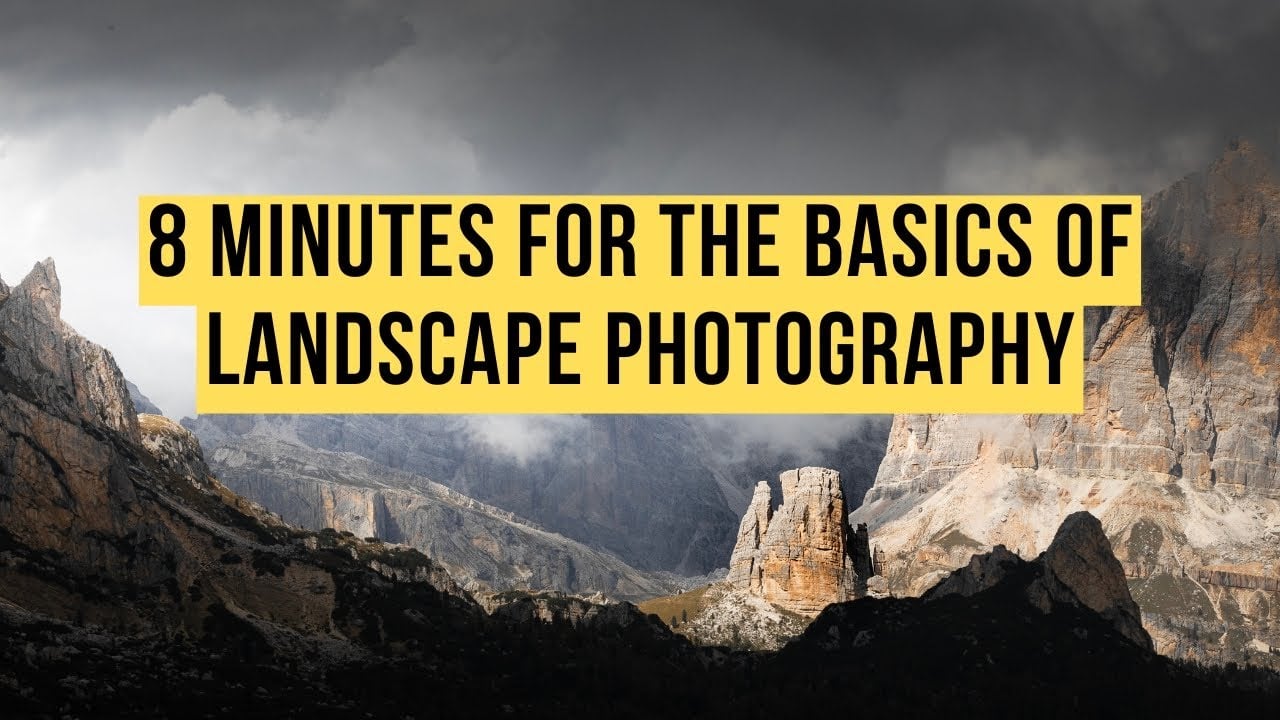
Landscape photography is an art form that combines technical skill, creative vision, and a deep connection with nature. For many aspiring photographers, the question of how to capture breathtaking images can feel overwhelming. Of course, like everything, it just takes practice and learning a few basic rules.
In this video, Toma Bonciu shares his insights on creating stunning landscape photos, breaking down the process into actionable steps.
The Foundation of a Great Photo
Toma emphasizes that editing can only take a photo so far. The real magic lies in the foundation—the raw image. He compares two versions of a photo he took in the Dolomites: the edited version and the unedited one. While editing enhances the final result, it’s the strong composition, lighting, and subject matter in the original shot that make the difference.
“Editing can get you far, but only if you have a strong base,” Toma explains. Whether it’s a dramatic mountain peak or a serene forest bathed in light, the foundation of your photo determines its potential.
The Three Pillars of Landscape Photography
Toma breaks down the creation of a compelling landscape photo into three main elements: technical structure, artistic vision, and editing. While artistic vision is deeply personal and influenced by your experiences, books, and even the movies you watch, the technical structure and editing are areas where you can develop concrete skills.
1. The Subject: Your Focal Point
In landscape photography, the subject isn’t always a physical object. It’s the area of interest that draws the viewer’s eye. This could be a towering mountain, a lone tree, or even the way light filters through a forest.
“Your subject needs to have good light, be unique, and be supported by a strong composition,” Toma advises. He shares examples of photos where the subject immediately grabs attention, such as a sunlit peak or a misty valley. The key is to identify what makes a scene special and highlight it.
2. Composition: The Framework of Your Image
A clear, well-thought-out composition is essential. It should support your subject and guide the viewer’s eye through the image. Toma stresses the importance of practising composition until it becomes second nature.
“You need to study composition to the point where you can walk into a location and immediately feel the right perspective,” he says. Dynamic angles, leading lines, and balanced framing can transform an ordinary scene into something extraordinary. Toma’s website offers an ebook with detailed examples of composition rules, which he highly recommends for those looking to deepen their understanding.
3. Settings: Getting the Basics Right
Once you’ve identified your subject and composed your shot, it’s time to focus on camera settings. Toma’s approach is straightforward: expose for your subject. If the light is hitting your focal point, adjust your settings to ensure it’s well-lit, even if the rest of the image falls into shadow.
“I’m not photographing underexposed,” Toma clarifies. “I’m exposing for the subject, and the rest of the photo naturally falls into place.” This technique ensures that your subject remains the star of the show.
4. Weather and Light: The Game Changers
Dramatic weather and lighting conditions can elevate a photo from good to unforgettable. Toma encourages photographers to embrace challenging conditions—fog, stormy skies, or the golden hour’s soft glow.
“The best photos often come from moments when everyone else stays indoors,” he says. Whether it’s the raw power of a thunderstorm or the ethereal beauty of a misty morning, these conditions add depth and emotion to your images.
Putting It All Together
Toma’s approach to landscape photography is both practical and inspiring. By focusing on a strong subject, mastering composition, nailing your camera settings, and embracing dramatic weather, you can create images that resonate with viewers.
But Toma also reminds us that photography is a journey. “The only way to get better is to keep photographing,” he says. Whether you’re exploring new locations or experimenting with different techniques, every shot brings you closer to mastering the craft.


